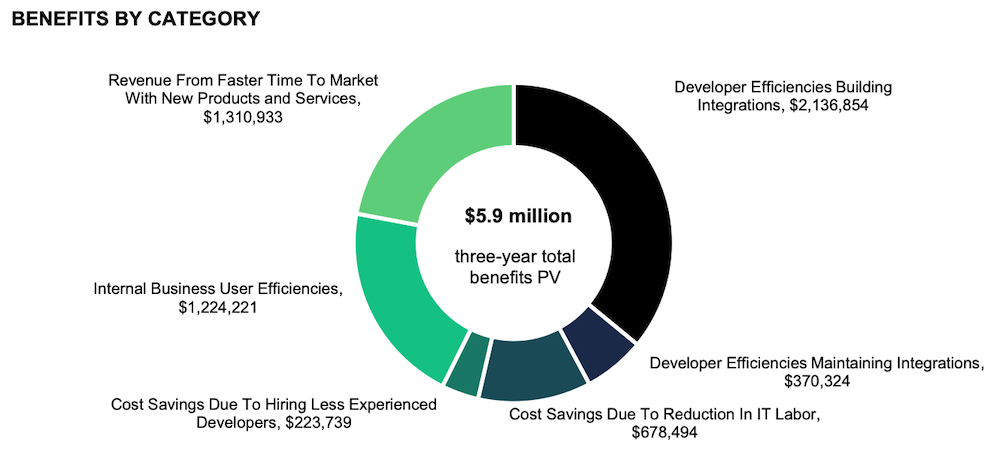December 5, 2022
Lembra quando todos pensávamos que os robôs viriam para tomar nossos empregos? Acontece que essa era a solução errada para o problema que precisávamos nos preparar. Em vez de uma falta de vagas, as indústrias ao redor do mundo estão enfrentando uma escassez sem precedentes de funcionários qualificados.
Essa tendência é particularmente aguda nos departamentos de TI, e os líderes estão correndo para implementar estratégias de redução de custos de TI enquanto competem por um número cada vez menor de especialistas de que precisam mais do que nunca.
Em 2020, apenas 4% dos executivos de TI disseram que a falta de talento estava impedindo a adoção de novas tecnologias. Em 2021, esse número subiu para 64%, e os especialistas alertam que a batalha para conquistar e reter os talentos necessários será ainda mais intensa em 2023. E o Gartner prevê que, até 2025, “a volatilidade da mão de obra” fará com que 40% das organizações registrem perdas significativas nos negócios, forçando uma mudança na estratégia de talentos, passando de aquisição para resiliência.

>> Agende uma demonstração personalizada com nossa equipe de especialistas e veja como o iPaaS da Digibee trará eficiência ao seu negócio.
A ascensão da integração de TI
A escassez de talentos em TI tem sido impulsionada por uma série de fatores, incluindo exigências de contratação pouco razoáveis e a “Grande Renúncia” desencadeada pela pandemia. Mas o ponto em que a falta de mão de obra qualificada e a crescente demanda por TI se encontram é o ritmo acelerado da transformação digital, enquanto as empresas buscam modernizar sistemas legados para competir com rivais exclusivamente online.
As organizações que desejam desbloquear dados isolados e conectar novas tecnologias a arquiteturas antigas estão recorrendo à integração. A grande maioria – 93% – dos CIOs, desenvolvedores e arquitetos de sistemas reconhece que sua organização se beneficiará da integração. Ao mesmo tempo, apenas 7% implementaram com sucesso uma solução de integração – e a escassez de talentos está entre os cinco principais obstáculos.
A solução: plataformas de integração low-code
Diante da necessidade urgente de modernizar e adotar novas tecnologias, agravada pela escassez de talentos em TI, as empresas estão recorrendo a plataformas low-code que não exigem especialistas de nicho para serem implementadas e utilizadas.
O que são plataformas low-code? Soluções low-code utilizam interfaces visuais intuitivas que simplificam tarefas de desenvolvimento, permitindo que pessoas sem conhecimentos especializados em programação construam ou personalizem as ferramentas necessárias para suas organizações.
A adoção de plataformas low-code cresce mais de 20% ao ano, e a Gartner prevê que mais da metade das empresas de médio e grande porte estarão usando essas soluções no próximo ano. Analistas também estimam que, até XNUMX, 80% dos produtos e serviços de tecnologia serão desenvolvidos fora dos departamentos de TI.
Os benefícios do iPaaS
Uma Plataforma de Integração com Serviço (iPaaS) é uma solução de integração low-code que reduz as pressões causadas pela combinação do aumento da demanda por modernização e da escassez de talentos em TI. Essa abordagem capacita membros da equipe com menor expertise a assumir tarefas que antes eram exclusivas de desenvolvedores sêniores.
O relatório Total Economic Impact™ 1 da Forrester sobre a Digibee detalha os benefícios empresariais e as economias que as organizações podem alcançar ao implementar um iPaaS.

Fonte: The Total Economic Impact™ Of Digibee’s Enterprise Integration Platform As A Service (eiPaaS), um estudo comissionado conduzido pela Forrester Consulting em nome da Digibee
Maior eficiência dos desenvolvedores
As organizações entrevistadas no relatório enfrentavam uma série de problemas relacionados à produtividade dos desenvolvedores com suas estratégias de integração existentes, incluindo:
- Escassez de habilidades que impossibilitava as equipes de TI de entregar projetos de integração dentro do prazo.
- Complexidade crescente que as plataformas e as equipes não conseguiam suportar.
- Alto volume de transações quebrando conexões, que precisavam ser reconstruídas posteriormente.
A implementação do iPaaS da Digibee melhorou drasticamente a eficiência dos desenvolvedores de diversas maneiras:
- A interface visual de arrastar e soltar tornou a criação de integrações mais rápida.
- A capacidade de reutilizar integrações já construídas reduziu o número de novas integrações que os desenvolvedores precisavam criar.
- Logs e métricas integrados simplificaram as tarefas de solução de problemas e monitoramento.
- A simplicidade para identificar e corrigir erros praticamente eliminou a necessidade de retrabalho em aplicações.
Redução de custos com mão de obra
Com o uso do iPaaS, equipes de TI menores foram capacitadas a realizar mais tarefas, permitindo que as empresas reduzissem custos com mão de obra sem comprometer sua capacidade de inovação.
- A maior eficiência dos desenvolvedores resultou em menos horas alocadas para criação e manutenção de integrações.
- A melhoria na supervisão e manutenção reduziu o número de escalonamentos necessários.
- A plataforma de integração low-code permitiu que as organizações contratassem desenvolvedores mais juniores para tarefas regulares, liberando especialistas para se concentrarem em novos projetos.
Deixe a Digibee ajudar você a reduzir os gastos com TI
Não deixe a escassez global de talentos atrasar seus planos de modernização e sua capacidade de competir em um mundo digital-first. A Digibee possui experiência comprovada em ajudar empresas a aumentar a produtividade dos desenvolvedores e reduzir os custos com mão de obra, enquanto diminui significativamente o tempo necessário para implementar uma estratégia de integração.
Baixe sua cópia do estudo The Total Economic Impact™ Of Digibee’s Enterprise Integration Platform As A Service e descubra mais sobre os benefícios mensuráveis que sua organização pode alcançar ao se tornar parceira da Digibee… ou agende uma demonstração para ver nossa solução em ação.
1Um estudo encomendado conduzido pela Forrester Consulting em nome da Digibee








